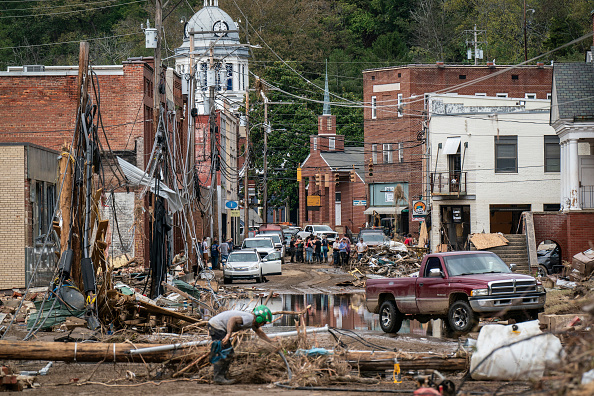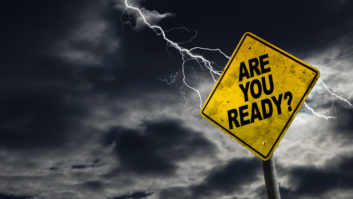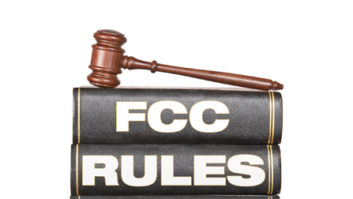Amid ongoing recovery efforts following the wrath of Hurricane Helene — which made landfall in Florida as a Category 4 hurricane on Sept. 26, and claimed more than 225 lives across several states — broadcasters in Florida’s Gulf Coast are preparing for another hit.
Weather forecasts indicate the center of Hurricane Milton could come ashore this Wednesday in the Tampa Bay region which, according to AP News, has not endured a direct hit by a major hurricane in more than a century.
11am EDT #Milton update: There is an increasing risk of life-threatening storm surge and damaging winds for portions of the west coast of the Florida Peninsula beginning Tuesday night or early Wednesday. Storm Surge and Hurricane Watches are now in effect for portions of the… pic.twitter.com/hoO6NJOaKd
— National Weather Service (@NWS) October 7, 2024
Here are updates from Beasley Media Group, the Broadcasters Foundation of America and the Federal Communications Commission as Milton approaches and South Florida cities enter a state of emergency.
Beasley Broadcasters Unite
Beasley Media Group’s Tampa/St. Petersburg and Fort Myers/Naples radio stations are actively preparing for Hurricane Milton. The broadcast group has updated its procedures in preparation of the storm, which you can read about below.
Hourly Storm Updates: The Tampa and Fort Myers markets will commence hourly storm updates immediately, increasing to twice per hour as the storm nears. Wall-to-wall coverage will begin 24 hours before landfall, incorporating active listener engagement.
Partnership with Local TV Stations: Beasley Tampa will partner with local Scripps ABC television, while Fort Myers will align with the Hearst NBC-2/ABC-7 affiliates to enhance storm coverage.
Remote Broadcasting: Should there be widespread flooding, evacuations, or power/internet outages, Q105’s afternoon host, Geno, will broadcast live from Beasley’s Boston-based studios to maintain continuous storm coverage.
On-Site Presence: Some staff may remain overnight at the radio station, provided there are no safety concerns.
Local Storm Coverage: All syndicated programming will be temporarily suspended during the storm to prioritize local storm coverage.
Digital Content and Storm Central: Beasley’s Digital Content team will establish a dedicated “Storm Central” section on the station websites, offering timely updates, which will also be shared across social media platforms. Additionally, Quu dashboard technology will deliver special messaging featuring storm warnings.
Beasley said its engineering team is on standby to address any technical issues that arise, ensuring the stations remain operational.
Broadcasters Foundation Lends a Hand
As broadcasters in Florida brace for Milton, the Broadcasters Foundation of America is delivering emergency financial assistance to radio and TV broadcasters that have been personally hit hard by Hurricane Helene. The foundation’s Emergency Grant Program is used to get emergency funds to those in desperate need quickly.
“Broken pipes, power outages, displacement and more have brought devastation to many of our colleagues,” said Tim McCarthy, president of the Broadcasters Foundation of America, in a press release.
“We’ve already approved over half a dozen requests and that’s just the beginning. Based on the number of requests from previous disasters, we know that figure will grow significantly as those impacted by the storm assess their damage and determine the costs.”

McCarthy said the Broadcasters Foundation has reached out to broadcast groups and state associations in impacted areas to let them know about aid opportunities.
“Our colleagues cannot be left alone to struggle,” he said.
Individuals in radio and television may apply for emergency aid here.
FCC Assesses Strom Damages
FCC Chairwoman Jessica Rosenworcel traveled to Asheville, N.C., this past Friday to assess communications recovery efforts in the aftermath of Hurricane Helene.
Western North Carolina and many of its small-town, mountainous communities were some of the hardest-hit by the storm. Local broadcasters have worked to bridge the gap in communication as power and cell service is slowly restored. As of Sunday, nearly 200,000 residents were still without power.

According to an FCC press release, Rosenworcel met with officials at the Buncombe County emergency operations center, received updates from staff from the FCC’s Public Safety and Homeland Security Bureau deployed to North Carolina to support communications recovery efforts, visited wireless carriers’ satellite cell on light truck locations in the impacted areas and dropped in on a local library serving as a community Wi-Fi hub and a local radio station.
Her comments are shared, in part, below.
“When disaster strikes, the FCC will always have boots on the ground. We collect outage data, conduct spectrum surveys to understand the state of coverage, determine the impact on radio and television, and assess capabilities for emergency services,” said Rosenworcel.
“This is our standard practice during and after hurricanes. But the area where Helene left her mark was especially broad and includes mountainous communities like those in western North Carolina that do not regularly see these kinds of storms. This terrain makes communication more challenging, with many wireless towers in areas that are high up and hard to reach, often because the roads to them have been blocked by debris and decimated by flooding.”
[Related: “Radio’s Resilience During Hurricane Helene Is Nothing New“]






